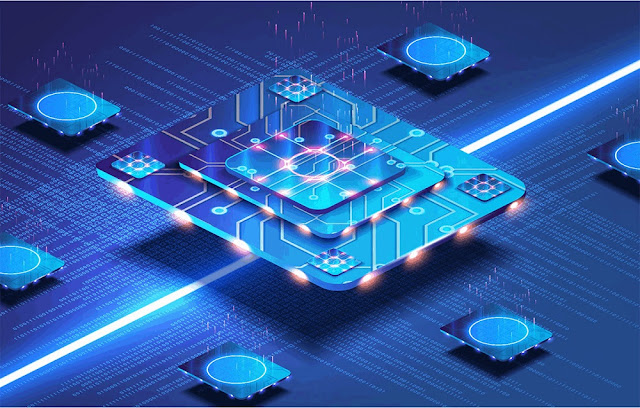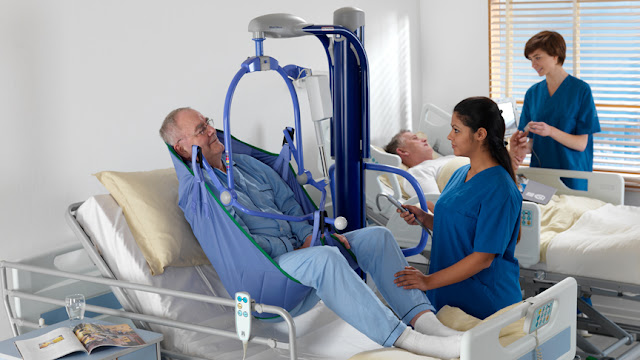Emerging Technology: The Rise of Neuromorphic Chips
 |
| Neuromorphic Chips |
The field of computing is evolving at a rapid pace,
with new technologies emerging all the time that promise to revolutionize how
we interact with machines. One area that has captured the interest of
researchers worldwide is neuromorphic engineering - an interdisciplinary field
that takes inspiration from neuroscience to design novel computing systems
known as neuromorphic chips. These groundbreaking chips are modeled after the
human brain and could transform everything from robotics to artificial
intelligence.
What are Neuromorphic Chips?
Neuromorphic
Chips, also referred to as artificial neural networks, are circuits
designed to function like the human brain. Unlike conventional computer
processors that follow a sequential fetch-execute cycle, neuromorphic chips
comprise many simple but highly interconnected processing elements that operate
in parallel, similar to biological neurons. These neural networks are non-von
Neumann architectures that mimic the interactions between brain neurons through
massive, parallel interconnections and adaptive synapses.
Rather than relying on the traditional von Neumann architecture with its rigid
separation of memory and processing, neuromorphic chips support asynchronous
logic and adaptive event-driven computations. Information in these
"neuromorphic processors" is represented using spikes, which
propagate from neuron to neuron through programmable synapses in a highly
distributed fashion. This approach allows neuromorphic chips to learn by
modifying the strengths of synaptic connections, just like the human brain.
Benefits of Neuromorphic Computing
There are multiple advantages that neuromorphic computing brings compared to
traditional digital architectures:
Energy Efficiency - Neuromorphic chips consume significantly less power than
digital processors as they only activate parts of the "brain"
relevant to current tasks. Research indicates they could achieve
orders-of-magnitude reductions in power usage versus von Neumann architectures.
Real-time intelligence - Event-driven, distributed computing enabled by
neuromorphic chips means they can rapidly process and perceive multiple sensory
inputs simultaneously with very low latency. This makes them ideal for
applications requiring instantaneous decision-making like robotics.
Lifelike Cognition - The brain-inspired design of these chips allows them to
learn, adapt, and make context-sensitive decisions in human-like ways instead
of following a predefined set of rules. Future neuromorphic AI systems may
perform far more complex tasks based on concepts rather than specific training.
Emerging Applications
With their impressive capabilities, neuromorphic chips have the potential to
transform many important application domains:
Intelligent Sensing - Neuromorphic sensor systems can process multimodal
sensory data like vision, sound, and touch directly at the edge with minimal
latency and energy usage. This enables autonomous machines with human-level
perception.
Robotics - Event-based, low-power neuromorphic computation is perfect for
enabling cognitive abilities in resource-constrained robots performing complex
tasks in unpredictable environments.
Adaptive Systems - Such chips could power devices and infrastructure that learn
from their environment and autonomously optimize themselves over long periods
of use with zero supervision.
Medicine - Modelling biological processes involved in diseases at the neural
circuit level may yield insights leading to novel drugs and therapies. Neuromorphic
implants could also interface directly with the brain.
Transportation - Real-time sensorimotor coordination, environment perception,
and situation awareness required for self-driving vehicles can benefit
immensely from neuromorphic techniques.
Current Challenges and the Road Ahead
While neuromorphic engineering has made remarkable progress, several challenges
still need to be overcome before these chips can achieve their full potential:
- Programming complexity: Developing algorithms and mapping workflows onto
neuromorphic architectures requires domain expertise that remains difficult for
most developers today. Simpler programming models are required.
- Network scale: Current neuromorphic systems containing millions of neurons
have not reached the scale and complexity of the human brain consisting of
billions of neurons. Continued scaling will be critical.
- Device non-idealities: Issues like noise, variability and defects in emerging
nanoscale devices used to build neuromorphic circuits must be addressed as they
limit computational accuracy.
- Applications maturity: Most demonstrated applications thus far have been
proofs-of-concept. Deeper integration of these techniques into commercial
products will accelerate practical adoption.
Nevertheless, with ongoing research worldwide and major investments from
governments as well as tech giants, neuromorphic computing is rapidly
advancing. If the above challenges are successfully addressed, neuromorphic
chips may emerge as the next revolutionary computing paradigm, enabling higher
intelligence, low-power cognition, and ultimately machines that think like
humans. Only time will tell just how profoundly they can impact our digital
future.
Get
more insights on this topic: Neuromorphic
Chips
Explore
More Articles: Medical Batteries
Market



Comments
Post a Comment